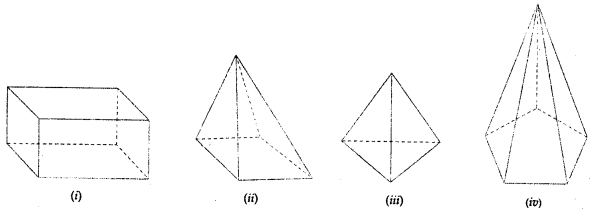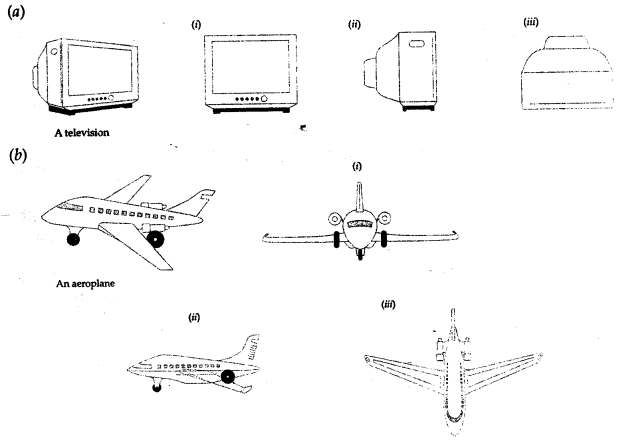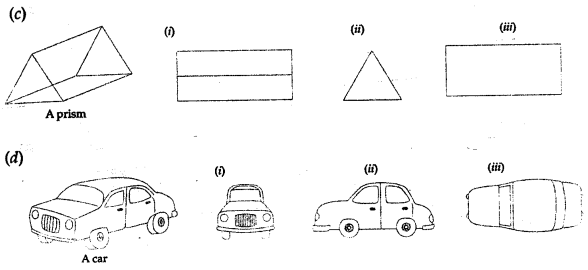ML Aggarwal Class 8 Solutions for ICSE Maths Chapter 17 Visualising Solid Shapes Check Your Progress
Question 1.
Write the number of faces, vertices and edges of a
(i) hexagonal pyramid
(ii) octagonal pyramid
(iii) decagonal pyramid
(iv) nonagonal pyramid
(v) heptagonal prism
(vi) decagonal prism.
Solution:
| Faces | Vertices | Edges | |
| (i) hexagonal pyramid | 7 | 7 | 12 |
| (ii) octagonal pyramid | 9 | 9 | 16 |
| (iii) decagonal pyramid | 11 | 11 | 20 |
| (iv) nonagonal pyramid | 10 | 10 | 18 |
| (v) heptagonal prism | 9 | 14 | 21 |
| (vi) decagonal prism | 12 | 20 | 30 |
Question 2.
Give three examples of 3-dimensional shapes around you which are the combinations of 2 or more 3-dimensional shapes.
Solution:
3-dimensional shapes which are the combination of
2 or more 3-dimensional shapes.
(i) A funnel: Combination of cone and cylinder.
(ii) A toy: Combination of a cone and hemisphere.
(iii) An ice-cream cone: Combination of a cone and hemisphere.
(iv) A circus tent: Combination of a cylinder and a cone.
Question 3.
Give two examples of solids which are not polyhedrons.
Solution:
Sides which are not polyhedron:
(i) Cylinder
(ii) Sphere
(iii) Cone
Question 4.
Why a pentagonal pyramid having all its edges congruent cannot be a regular polyhedron?
Solution:
A pentagonal pyramid having all its edges congruent cannot be a regular
polyhedron because all the vertices of it are not formed by the same number of faces.
Question 5.
In a polyhedron, if F = 8 and V = 12 then find the number of edges.
Solution:
In a polyhedron,
F = 8, V = 12, then edges
F + V = E + 2
⇒ E = F + V- 2
⇒ Edges = 8 + 12 – 2 = 18
Question 6.
Verify Euler’s formula for the following figures:

Solution:

Question 7.
For each of the given solid, the three views are given. Identify for each solid the corresponding top, front and side views:


Solution:
(a) A television
(i) Front view
(ii) Side view
(iii) Top view
(b) An aeroplane
(i) Front view
(ii) Side view
(iii) Top view
(c) A prism
(i) Top view
(ii) Front view
(iii) Side view
(d) A car
(i) Front view
(ii) Side view
(iii) Top view